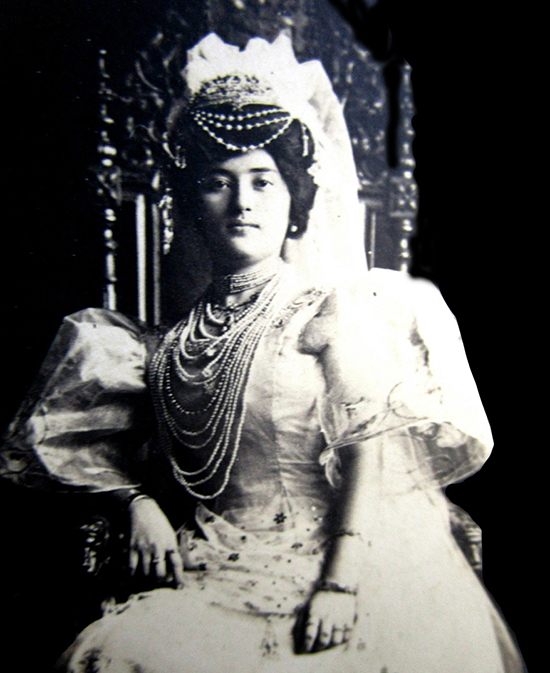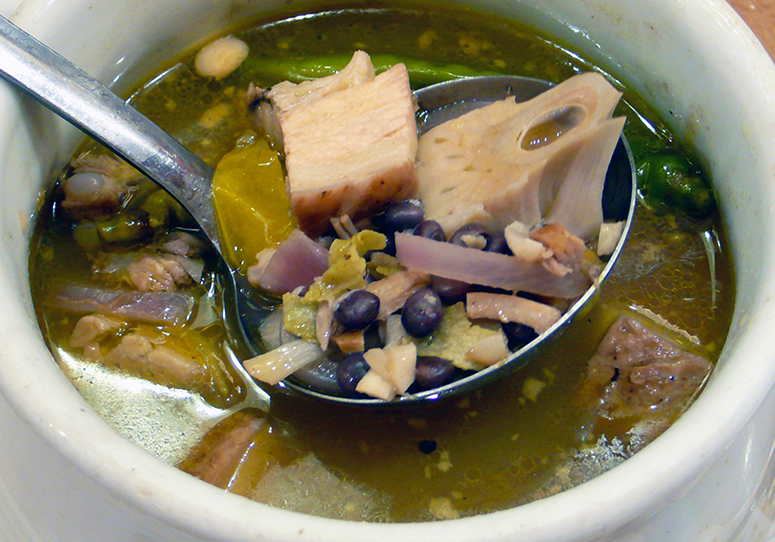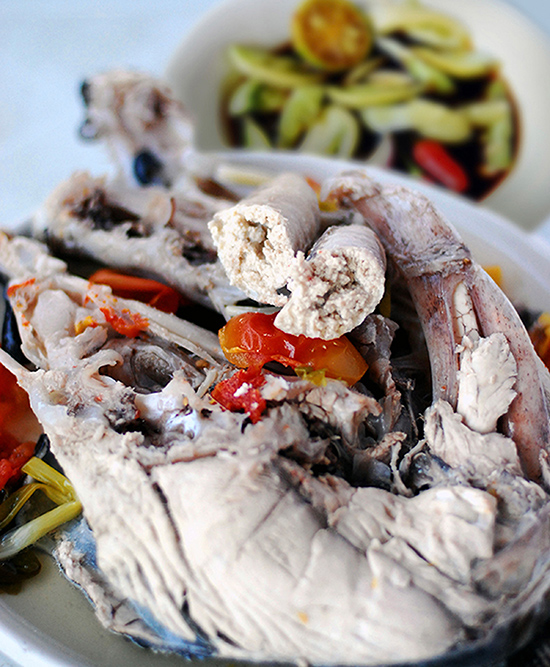Around the world with 80 Pinoy adobos
The biggest little Filipino cookbook of Pura Villanueva Kalaw
Chapter 5: Back to the future
In my search for that elusive Pinoy adobo, I’ve pored through old and contemporary Filipino cookbooks, as well as interviewed food historians, professional chefs and home cooks. Along the way, I sometimes get lucky getting new information, leading my search in a new direction, to finally discovering a gem of a story.
This is the case with Pura Villanueva Kalaw. Let’s take a side trip back to the future to learn the life and times of this fascinating Filipina during the early, formative years of our nation.
In Chapter 2 of this series, we came across an adobo recipe called Adobo de pollo, written by Emilia Manguiat de Kalaw of Batangas. It was found in the book Condimentos Indígenas (Native Cooking/Condiments) by Purita Villanueva de Kalaw, originally published in Spanish in Manila, 1918. I got this information from food historian Felice Sta. Maria, who replied to my query about the earliest known Filipino cookbooks published locally, especially where the Pinoy adobo is included.
Pura was half-Spanish and claimed she did not have an inferiority complex because she came from the conquering race! She was full of self-confidence. When she became the first ‘Queen of the Manila Carnival’ in 1908 at age 22, she was already an accomplished writer.

When the Chapter 2 article came out, I sent the link to my good friend Ada Ledesma Mabilangan, asking how she was related to Pura V. Kalaw. She said her mother, Purita Kalaw Ledesma, was the third of four children of Pura. Ada said she has an original copy of the said cookbook, and there’s a family legend about why her grandma wrote it.
Of course, I was intrigued to no end and had to literally beg her to share the family legend. Not only did she oblige, she also sent me a photocopy of the cookbook. “It’s so tiny and thin, and very fragile,” Ada wrote in an email interview. “There’s a dedication to Doreen Fernandez from Nic Tiongson, dated June 21,1971, who gave the book to her. Then Doreen gave it to me.”

Here is Ada’s narrative on her formidable grandmother and the littlest cookbook (postcard size at 3.5 x 5 inches):
“Pura Villanueva was a beauty queen, writer, suffragette, businesswoman and nationalist. Her mother, Emilia Garcia, was a Spaniard from Palencia, Spain. Emilia met her future husband, Emilio Villanueva, a Filipino from Iloilo, while he was studying law in Salamanca.
“Pura was half-Spanish and claimed she did not have an inferiority complex because she came from the conquering race! She was full of self-confidence. When she became the first ‘Queen of the Manila Carnival’ in 1908 at age 22, she was already an accomplished writer (in Spanish) and had organized a suffrage group, Asociacion Feminista Ilongga, which led to the first suffrage bill reaching the Philippine Assembly in 1907. But she bloomed further even after her marriage with lawyer Teodoro Manguiat Kalaw (the future National Library director, historian and legislator after whom T.M. Kalaw Street in Manila is named), because her husband allowed it. He was not a typical Filipino male. He had enough self-confidence not to be intimidated by her. I think you could call them a ‘power couple’ of their time.

“Early in their marriage, Lolo Teodoro had a leg injury that necessitated its amputation. My mother, Purita, wasn’t born yet then. I guess, since he was young, he was able to adjust to an artificial wooden leg more easily. Anyway, the doctor recommended he could play billiards for physical exercise. He could walk around the table, leaning on it from time to time.
“Since the young couple didn’t have enough money to buy a billiard table, Pura thought of publishing a cookbook to raise money to purchase it. But the bigger problem was — she didn’t know how to cook! Being the ever resourceful, independent person that she was, she asked her friends and her husband’s relatives to contribute recipes. She also solicited advertisements, which actually paid for its printing, I imagine. That’s the family legend how this little cookbook came about.”
For someone who didn’t know how to cook, she nevertheless gave paramount importance to the housewife’s role in providing a nutritious diet for a healthy and happy family.
Reading through the pages of this little big book, one realizes how Pura Villanueva Kalaw was way, way ahead of her time. For someone who didn’t know how to cook, she nevertheless gave paramount importance to the housewife’s role in providing a nutritious diet for a healthy and happy family. Even in 1918, she was already concerned with “the prohibitive cost of imported goods.” She was advocating the use of local and provincial produce, which she says was fresher and more nutritious: “Whereas imported goods are processed and are treated with preservatives to withstand long shipment.”
In her intro she wrote: “In these trying times in which the prices of imported goods have risen beyond the reach of many families, we put in the hands of our women these culinary recipes to suggest that, instead of reducing the portions of their ingredients for economic reasons, they consume only local products and they make use of every nutritive bit. Filipino ladies from different regions have generously consolidated their culinary knowledge, which they have translated into these recipes in which the ingredients are all genuine Filipino products.” (Translated from the original Spanish into English by Jaime Marquez Tayag)
In the same intro, she also thanked her husband’s relatives from Batangas Emilia Manguiat de Kalaw, Arsenia Kalaw Silva and Rosario Kalaw Katigbak, as well as her friends from different parts of the country: Agueda Dia de Guariña from Sorsogon, Victoria Peralta de Paredes from Ilocos, Teresa Veloso de Vamenta from Cebu, Maria Villanueva de Salas from Iloilo, Petra de Taylor from Cebu, Rosalía Vasquez from Ilocos, Aguilar de Pasig and Miss Shuck from Mindanao.
With a total of 154 recipes, the 1918 cookbook includes popular and quite familiar Filipino dishes known in Manila and the provinces, even to this day. They are what I’d call “classic” Filipino dishes.

Of the 54 vegetable recipes, there’s pinangat daragueño, monggo guisado, tauge de mongo, kaguios con nanca (Iloilo’s kadios, baboy, langka), sitaw guisado, relyenong talong, bulanglang, kilawin puso ng saging, pakbet, corn soup with malunggay (today’s suam na mais), and atsara, to name a few.
For the poultry recipes, we have of course the adobo de pollo, albeit the Batangas variant with atsuete (annatto), since its contributor is from that place. There’s also the chicken daily staples of morcon, linaga (boiled), tinola, kari de pollo (chicken curry), apritada, etc.
Unfamiliar chicken recipes are con salsa de chocolate, con salsa verde (made with kinchay or Chinese flat-leaf parsley/celery), and con hojas de pimiento (pepper leaves). The closest that resembles the latter is tinolang manok, though the present-day version has ginger.
Included in the pork and beef recipes are pata de cerdo (present-day paksiw na pate), estofado, mechado, sinigang, puchero, longaniza Filipina, dinardaraan (Ilocano dinuguan or blood stew), and lechon de cerdito (piglet not more than four months old). It is noteworthy that its accompanying salsa para el lechon recipe is included. And yes, it has the requisite pork liver, vinegar, sugar and black peppercorn.

Of the 29 seafood recipes, most familiar to us today are the pinaksiw o inun-unan (fish stewed in vinegar; Tagalog paksiw, Cebuano inun-unan); tinola de cabeza de pescado (Visayan boiled fish head with green tomatoes); Cardillo (fried fish with an egg/tomato/onion sauce); escabeche; relleno (stuffed), crab omelet, oyster omelet, calamares en su tinta (aka adobong pusit); and kilawin de pescado (fish kinilaw).

For those with a sweet tooth, 33 dessert recipes are offered, including perennial Filipino favorites like leche flan, merengue, yemas, mazapan de pili, guinataan, pinindot de arroz (glutinous rice balls cooked in coconut milk), palitaw de arroz (glutinous rice cakes coated with grated coconut), bukayo de coco (candied coconut strips), panocha de mani (peanut brittle), puto maya (glutinous rice cake), and others.
More than a century hence upon its publication in 1918, most of the recipes in this cookbook are still being cooked and loved by today’s generation of Filipinos. For any follower of Filipino cuisine, its relevance and timelessness cannot be underscored enough. It is hoped that the heirs of Pura Villanueva Kalaw come out with an English translation and updated version of this biggest little Filipino cookbook.


